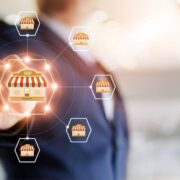There are several methods for holding the workpiece when milling. Specific actions require hydraulics, while others may be completed with hand-clamping methods. Every actionable option has both good and negative implications. Precision and accuracy are becoming increasingly crucial as machining technology advances. What qualities distinguish the finest clamping systems for your needs? Let us examine both manual and power clamping.
Hydraulic Pressure Uses in Clamping
Hydraulic clamping systems are commonly used in high-precision machining. They may be produced on a consistent and dependable basis. Hydraulic clamping may be used to hold a wide variety of workpieces, including those with unusual dimensions or forms, due to its versatility.
The primary advantage of hydraulic clamping is its simplicity and mechanical execution. You may fine-tune the gripping force of each workpiece by altering the pressure with a hydraulic system. This reduces the possibility of variation due to human error and increases uniformity. High hydraulic pressure can be employed during milling to keep workpieces securely in place. As a result, the task is performed more quickly, and the equipment lasts longer.
Manual clamping methods are less expensive and need less storage space than hydraulic clamping systems, which is the ideal option for individuals looking to save money. Yet, the time it takes to complete production may make it more expensive in the long run.
Techniques of Manual Clamping
While manual clamping methods are less accurate than hydraulic clamping methods, they can nonetheless produce high-quality work. Manual clamping is usually easier to operate than hydraulic clamping. They are, nevertheless, perfectly suited to low-volume applications that need a high level of precision or automation.
Manual clamping methods may be advantageous when space is limited, or the clamp must be adjusted often. This can be more difficult for the workers who utilize them and necessitate extra training from the company.
Considerations Before Choosing a Solution
Many factors must be considered when selecting a workholding system, including the following:
- How many do you intend to sell per day on average?
- What precisely is the needed reserve made up of?
- What amount of automation, if any, is present?
- How constrained is the tool path?
- Will they accumulate if they are not removed?
- Is the issue tough to resolve?
Usually, a workaround is available. Vise Force® manufactures universal clamps that are compatible with hydraulic and manual clamping mechanisms. These clamps are perfect for attaching a range of materials since they can be modified to fit a number of surfaces.
Vise Force® workholding clamps can be fastened utilizing a hydraulic system or a manual crank. Because each clamp is intended to open to the same size, the clamping force applied to the workpiece will be consistent. These little clamps help to limit noise, vibration, and motion during the machining process, resulting in a higher-quality finished product.
PAWS Workholding’s Vise Force® wedge clamps are an excellent solution if you need anything to stay in place for a number of reasons. These clamps are flexible since they may be utilized with hydraulic or manual clamping systems. If you require assistance in selecting workholding clamps or determining which workholding solution is ideal for your needs, please get in touch with PAWS Workholding right immediately. You’ll be pleased with the support we can offer.
We are a market leader in workholding manufacture. There’s a reason we’ve been in business for so long, and you’ll understand why in no time. You may work directly with one of our professionals if you need more help on workholdings or even modify some to match your individual needs!








Comments